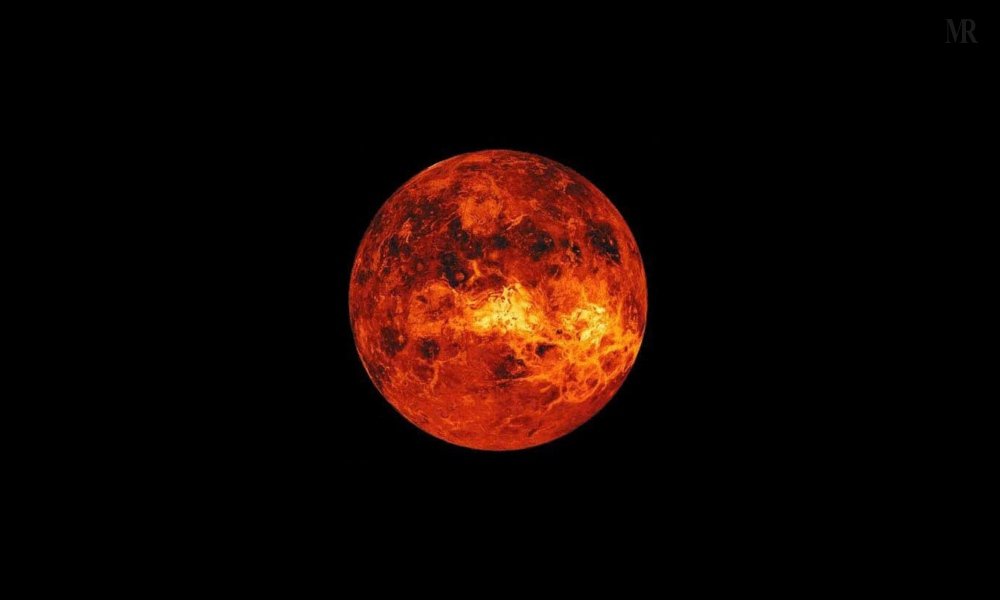Remember sitting in school, learning about the planets? If you’re anything like me, you probably absorbed the simple idea: the closest to the sun, the hottest. Made perfect sense, didn’t it? Mercury, hugging the Sun tighter than any other planet, had to be the solar system’s undisputed heat champion. Right?
But what if I told you that this simple rule is wrong? Prepare for a cosmic twist as we uncover the answer to what is the hottest planet in the solar system… And the answer to the hottest planet is Venus, not Mercury!
But how can the second planet from the Sun be hotter than the closest one?
That’s exactly the “why” we’re going to explore! We’re launching into an exploration of the genuinely wild reasons behind Venus’s insane temperatures and expose the totally fascinating science that, against all odds, makes it our solar system’s hottest world. Just like when Pluto got its planetary status reconsidered and we all went “huh?!”, this “hottest planet” revelation is just another cosmic nudge reminding us that space is just brimming with incredible, unexpected twists and turns!
Side-By-Side Look At Mercury And Venus
So, before we jump to any conclusions about the solar system’s hottest planet, it’s smart to get acquainted with Mercury and Venus a bit better.
| Feature | Mercury | Venus |
| Planet Type | Rocky, Terrestrial | Rocky, Terrestrial |
| Distance from Sun | Closest | Second Closest |
| Atmosphere | Extremely Thin Exosphere (Exosphere) | Very Dense, Thick (96% CO2, Sulfuric Acid Clouds) |
| Greenhouse Effect | Negligible | Runaway Greenhouse Effect (Extreme) |
| Core | Metallic Iron~85% of Planet Radius | Metallic Iron~2400 km Diameter |
| Mantle | Molten RockyRelatively Thin | Molten Rocky~3000 km Thick |
| Crust | Basalt~100-300 km Thick | Basalt10-20 km Thick (Avg) |
| Day Side Temperature (Max) | ~800°F (430°C) | ~880°F (471°C) (Consistent, Day & Night) |
| Night Side Temperature (Min) | ~-300°F (-184°C) | ~880°F (471°C) (Consistent, Day & Night) |
| Temperature Range | Extreme Temperature Swings (Over 1000°F) | Very Small Temperature Range (Consistently Hot) |
| Key Temperature Reason | Proximity to Sun, but No Atmosphere to Retain Heat | Extreme Greenhouse Effect due to Dense CO2 Atmosphere |
Related: Unraveling the Mystery behind the Area 51 Raid Live Stream
Why Mercury Is Not The Solar System’s Hottest Planet?

Okay, Mercury does get incredibly hot. Being so close to the sun, its sunny side can reach a sizzling 800 degrees Fahrenheit (around 430 degrees Celsius).
But because Mercury barely has an atmosphere it can’t hold onto any of the Sun’s heat. Therefore, at night, or on Mercury’s dark side, temperatures fall drastically to -300°F (around -184°C)! That’s a massive temperature swing. And get this – in some craters near Mercury’s poles, the sun never shines. Some scientists believe there might even be ice hiding in those permanently shadowed spots.
So, while Mercury gets scorching hot in the sun, it gets unbelievably cold in the shade. This wild temperature variation prevents it from being the consistently hottest planet.
Why Is Venus The Hottest Planet In Solar System?

We know Venus is a bit further from the Sun than Mercury. But when it comes to heat, Venus is no less. The surface of Venus is a staggering 880 degrees Fahrenheit (about 471 degrees Celsius) – consistently. That’s hotter than the melting point of lead!
The reason for Venus’s scorching temperatures is its atmosphere. Imagine Venus in a super thick, heat-trapping blanket. Its atmosphere is incredibly dense and thick – about 96% carbon dioxide. Therefore on Venus, the greenhouse effect is in overdrive.
Here’s how temperature on Venus works:
- Sunlight gets in: High-energy sunlight passes through Venus’s atmosphere and reaches the surface, warming it up.
- Heat gets trapped: Venus’s warmed surface naturally tries to radiate this heat back out into space as infrared radiation (think heat waves).
- Greenhouse gases block the exit: The thick layer of carbon dioxide and dense clouds in Venus’s atmosphere act like a blanket, trapping that infrared radiation and preventing it from escaping into space.
- Heat builds up: This trapped heat just keeps building up, making Venus’s surface and lower atmosphere incredibly hot.
- Other contributors: Venus’s atmosphere also contains clouds of sulfuric acid and an atmospheric pressure that’s about 90 times than of its twin planet Earth! Therefore making the heat worse.
Now since we’ve explored what is the hottest planet, you might be wondering about the opposite – what is the coldest one in the solar system?
The Coldest Planet In The Solar System
Previously, Pluto was considered the coldest planet because it’s the farthest from the Sun. But then it got reclassified as a “dwarf planet”. So, when it comes to the official planets, the title of “coldest planet” becomes more interesting. Here’s why…
- Both Neptune and Uranus are incredibly cold due to their immense distance away from the Sun.
- Neptune, the eighth planet, has a chilly average surface temperature of around -214°C (-353°F).
- Uranus, the seventh planet, can actually get even colder in its atmosphere — reaching a record low temperature of -224°C (-371°F).
So, depending on how you define “coldest” (surface temperature or coldest recorded temperature), either Neptune or Uranus could claim the title! But one thing is for sure – they are both a long, long way from the scorching heat of Venus, our solar system’s undisputed hottest planet.












